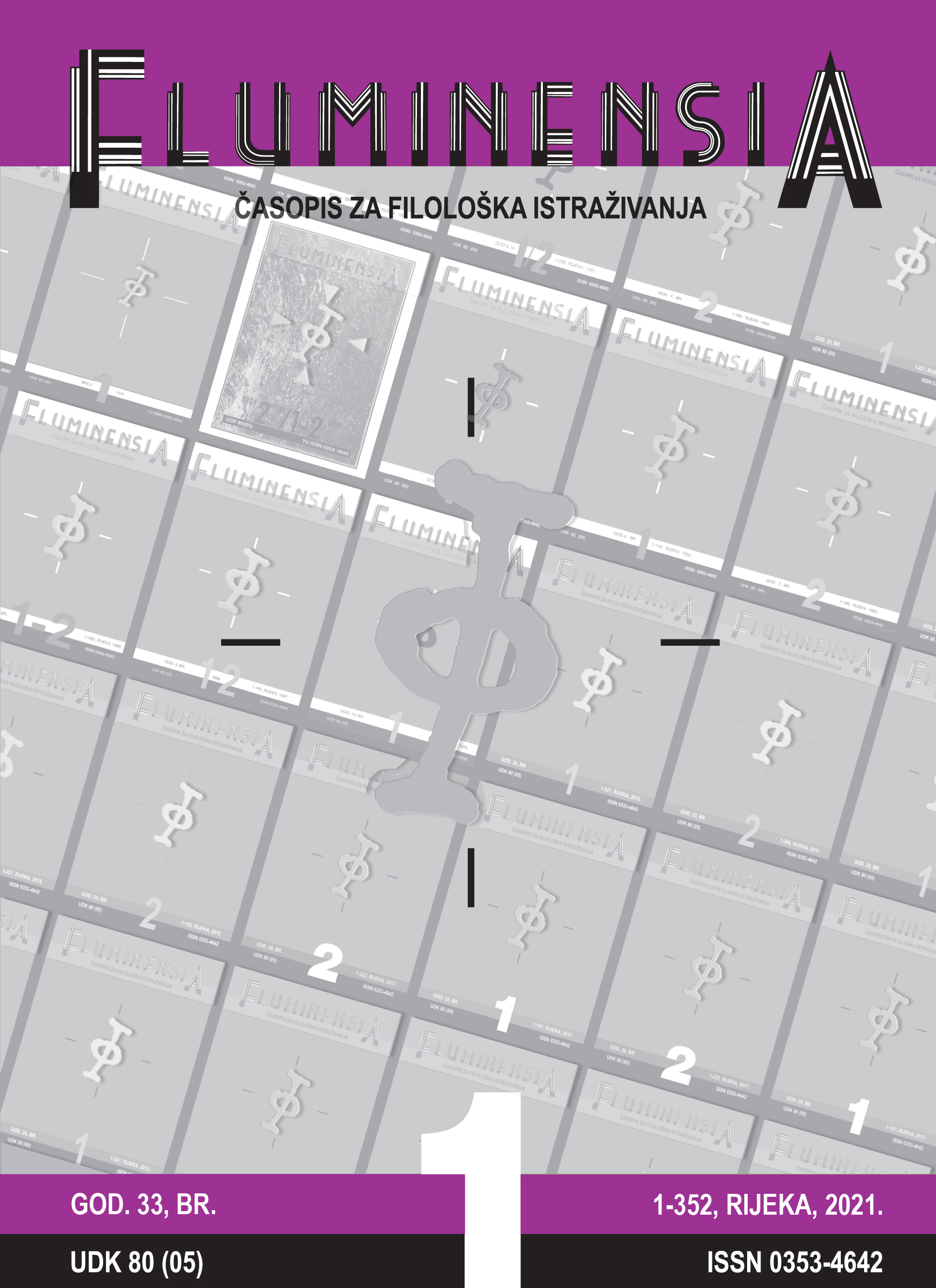Social activism of the playwright Fabrio hidden behind a fifty-year-old code
Keywords:
history, power, allusion, code, eternity, realityAbstract
In this paper we analyse six allusive plays by Nedjeljko Fabrio: Reformatori, Admiral Kristof Kolumbo, Čujete li svinje kako rokću u ljetnikovcu naših gospara?, Meštar, Kralj je pospan and Magnificat.
We foremostly focus on the time at which Fabrio’s plays were written, especially on the fact that artists were held to be criminally liable if they dealt with topics that were outside of the scope of the regime restrictions on the artistic freedom and if they took them as motifs for the creation of artistic dramatic reality which would reveal the anguish of the man at that time. Within this historical context we explore the mission of a writer, who is accountable to reality, to persevere, to (we quote from the monologue of one of the characters from the play Reformatori) turn his own environment into a scientific and literary truth and throw it back into its face so that it can see and become aware of itself.
Thus, the author approaches the creation of the forms of his plays the purpose of which is to hide the truth about the present under the mantle of the past or a dreamlike plot. This concealment is in this paper termed ‘speech in code’. Allusiveness of one play is transferred into another, it is continued and built upon, and it increasingly reflects the author’s painful vison of the dramatic plot which leads to a confrontation with the general properties of history.
The goal of this research is to reveal the charge of the properties of each coded work, their allegorical association, up until the time of the self-governing model of life, when the author raises the issue of the guilt of the authorities, but also of the guilt of those who are compliant with these authorities. As far as the research of the properties of Fabrio’s last play, Magnificat, is concerned, the paper reveals the author’s completely original aesthetic-dramaturgical consequences of the well-known model of theatre within the theatre. By contrasting two parallel realities, the reality of the performers and the artistic reality of the play, the author unites them, and, in the concrete historical situation of performing the play, that is, writing the play, they are identified as joint reality.
On the basis of the decoded concreteness of events, the paper follows the author’s striving to re-examine the metaphysical horizon of reality in situations in which the vertical position of power intertwines with the horizontal position of the man-sufferer, and vice-versa. At this point we can see that they evolve to the level of truth. And this result is described in the paper as a valuable aesthetic achievement – unlike the works of those playwrights who develop the plot from their own thesis and thus become its recorders, without any chance of following a plot that develops on its own and thus realising themselves as real playwrights.

